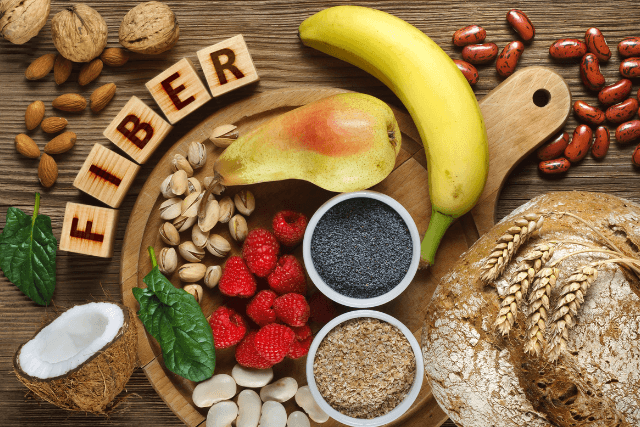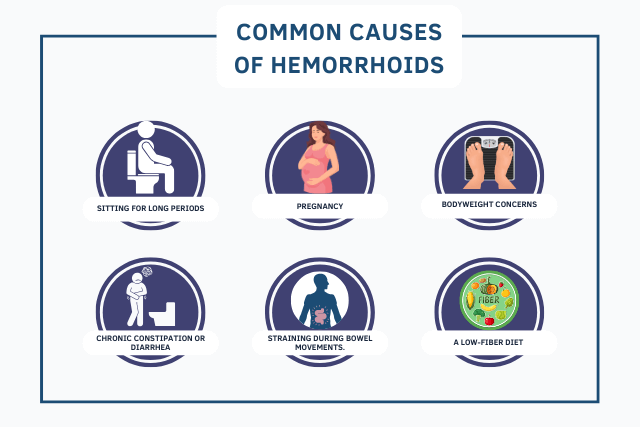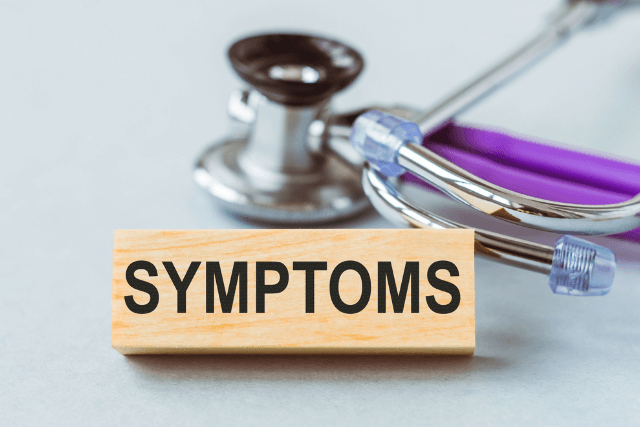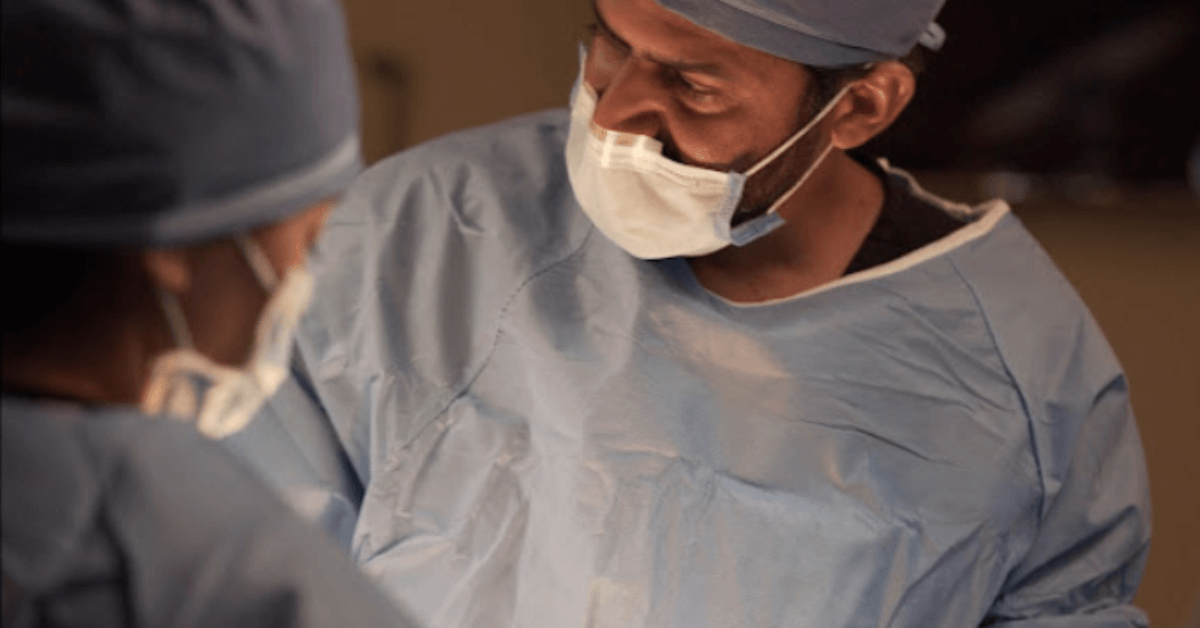Hemorrhoids are a common but uncomfortable condition that affects many people at some point in their lives. If you’ve ever dealt with rectal discomfort, chances are you’ve wondered if it’s related to hemorrhoid symptoms. The good news is that identifying hemorrhoid symptoms early can help you avoid further complications and find relief faster. In this blog, we will walk through how to identify hemorrhoid symptoms, discuss how to relieve them, and introduce LHP® Laser Hemorrhoidoplasty, a modern laser treatment that can provide lasting relief.
What Are Hemorrhoids?
Before diving into the specifics of hemorrhoid symptoms, let’s understand what hemorrhoids are. Hemorrhoids are swollen veins in the rectum and anus that can cause pain, itching, and bleeding. They are similar to varicose veins but occur in the rectal region. Hemorrhoids are often caused by factors such as:
- Chronic constipation or straining during bowel movements
- Pregnancy, which puts pressure on the pelvic veins
- Sitting for long periods, particularly on the toilet
- Obesity, which can increase pressure on the veins in the lower abdomen
It’s essential to recognize hemorrhoid symptoms as early as possible so that you can manage the condition effectively and prevent it from worsening.
Hemorrhoid Symptoms: How to Identify Them
Recognizing hemorrhoid symptoms early on can make a huge difference in your overall treatment plan. Here are some common signs to watch for:
1. Rectal Pain or Discomfort
One of the first and most noticeable hemorrhoid symptoms is pain or discomfort in the rectal area. This pain can occur during bowel movements or even while sitting. The severity can vary depending on whether the hemorrhoids are internal or external.
- External hemorrhoids: These tend to be more painful because they develop outside the anus, making them more exposed to irritation.
- Internal hemorrhoids: These are located inside the rectum and are typically less painful but can cause significant bleeding.
2. Bleeding
Bleeding is another common hemorrhoid symptom. If you notice blood on toilet paper or in the toilet bowl after a bowel movement, it’s likely due to hemorrhoids. Internal hemorrhoids are often the cause of this bleeding, which typically appears as bright red blood.
Tip: If the bleeding is persistent or heavy, it’s essential to consult a doctor to rule out other more serious conditions.
3. Itching and Irritation
Itching around the anus is a frequent complaint among people with hemorrhoids. The irritation is typically caused by mucus secretion from internal hemorrhoids. The area may become sore and inflamed, making the itch worse.
4. Swelling or Lumps Around the Anus
External hemorrhoids are known to cause swelling or lumps around the anus. These lumps can sometimes be felt and are often tender to the touch. Swelling can also occur with internal hemorrhoids if they protrude from the rectum.
5. Mucus Discharge
A mucous discharge is another possible hemorrhoid symptom. This can occur due to the irritation caused by hemorrhoids, and it can leave you feeling uncomfortable.
Different Types of Hemorrhoids and Their Symptoms
It’s important to know the difference between the two main types of hemorrhoids, as the symptoms can vary depending on whether you have internal or external hemorrhoids.
Internal Hemorrhoids
These hemorrhoids are located inside the rectum and are usually not visible or painful. However, they can cause symptoms such as:
- Rectal bleeding, especially when straining during a bowel movement
- Mucus discharge
- Prolapse or the hemorrhoid protruding from the anus, which can cause pain and discomfort
External Hemorrhoids
External hemorrhoids are located around the anus. These hemorrhoids are more noticeable and typically cause the following symptoms:
- Pain and tenderness
- Visible lumps or swelling around the anus
- Itching and irritation
- Bleeding, particularly when wiping after a bowel movement
Relief Options for Hemorrhoid Symptoms
Now that we’ve discussed how to identify hemorrhoid symptoms, it’s time to explore some effective treatment options. There are several ways to manage the discomfort caused by hemorrhoids, ranging from simple lifestyle changes to medical treatments.

1. Dietary Changes
A high-fiber diet can help relieve hemorrhoid symptoms by softening the stool and reducing the strain during bowel movements. Foods rich in fiber include:
- Fruits (such as apples, berries, and bananas)
- Vegetables (like broccoli, spinach, and carrots)
- Whole grains (such as oats, brown rice, and whole-wheat bread)
- Legumes (such as beans, lentils, and chickpeas)
Additionally, staying hydrated by drinking plenty of water can help prevent constipation, which often exacerbates hemorrhoid symptoms.
2. Over-the-Counter Medications
There are various over-the-counter (OTC) creams, ointments, and suppositories available to treat hemorrhoid symptoms. These often contain ingredients such as:
- Hydrocortisone, which reduces inflammation
- Witch hazel, which provides soothing relief
- Lidocaine, which numbs the area to relieve pain
3. Sitz Baths
A sitz bath involves sitting in warm water for 15-20 minutes. This can help reduce pain, itching, and swelling associated with hemorrhoid symptoms. You can do this several times a day, especially after bowel movements.
4. Ice Packs for external hemorrhoids
Applying ice to the affected area can reduce swelling and numb the pain. Ice packs can be especially helpful for external hemorrhoids, which are more painful and swollen.
5. Avoiding Straining
Avoid straining during bowel movements, as this can worsen hemorrhoid symptoms. If you’re constipated, consider using a stool softener or increasing your fiber intake. When you feel the urge to go, don’t delay, as waiting can make constipation worse.
6. Regular Exercise
Regular physical activity, such as walking or swimming, can help improve bowel function and prevent constipation, which can, in turn, reduce hemorrhoid symptoms.
Medical Treatments for Hemorrhoid Symptoms
If home remedies aren’t enough to relieve hemorrhoid symptoms, or if the hemorrhoids are severe, medical treatments may be necessary. Here are some options:
1. Rubber Band Ligation
This is a minimally invasive procedure in which a rubber band is placed around the base of an internal hemorrhoid, cutting off its blood supply. Over time, the hemorrhoid shrinks and falls off.
2. Sclerotherapy
Sclerotherapy involves injecting a chemical solution into the hemorrhoid to shrink it. This method is commonly used for smaller hemorrhoids.
3. Hemorrhoidectomy
In extreme cases, surgical removal of hemorrhoids, known as a hemorrhoidectomy, may be required. This procedure is typically reserved for large or persistent hemorrhoids that don’t respond to other treatments.
4. LHP® Laser Hemorrhoidoplasty
For those seeking a minimally invasive and effective treatment, LHP® Laser Hemorrhoidoplasty is an advanced option. This laser procedure targets the swollen veins that cause hemorrhoids, using a focused beam of light to shrink and coagulate the affected tissue.
LHP® Laser Hemorrhoidoplasty has gained popularity due to its ability to offer several benefits over traditional treatments, including:
- Shorter recovery time: Many patients can resume normal activities within a few days.
- Reduced pain: The laser causes minimal tissue damage, resulting in less postoperative pain.
- Precision treatment: The laser targets the hemorrhoids with minimal effect on surrounding tissue, making it a highly effective treatment option.
Conclusion: How to Identify Hemorrhoid Symptoms and Relieve Them.
Hemorrhoid symptoms can be uncomfortable and sometimes even painful, but they are treatable. By identifying the symptoms early and exploring various treatment options, you can find relief from the discomfort. If at-home remedies and over-the-counter treatments aren’t sufficient, medical options like LHP® Laser Hemorrhoidoplasty offer a modern, minimally invasive approach to managing hemorrhoids effectively.
Remember to seek professional medical advice if your symptoms persist or worsen. With the right treatment plan, you can take control of your hemorrhoid symptoms and get back to feeling like yourself.




